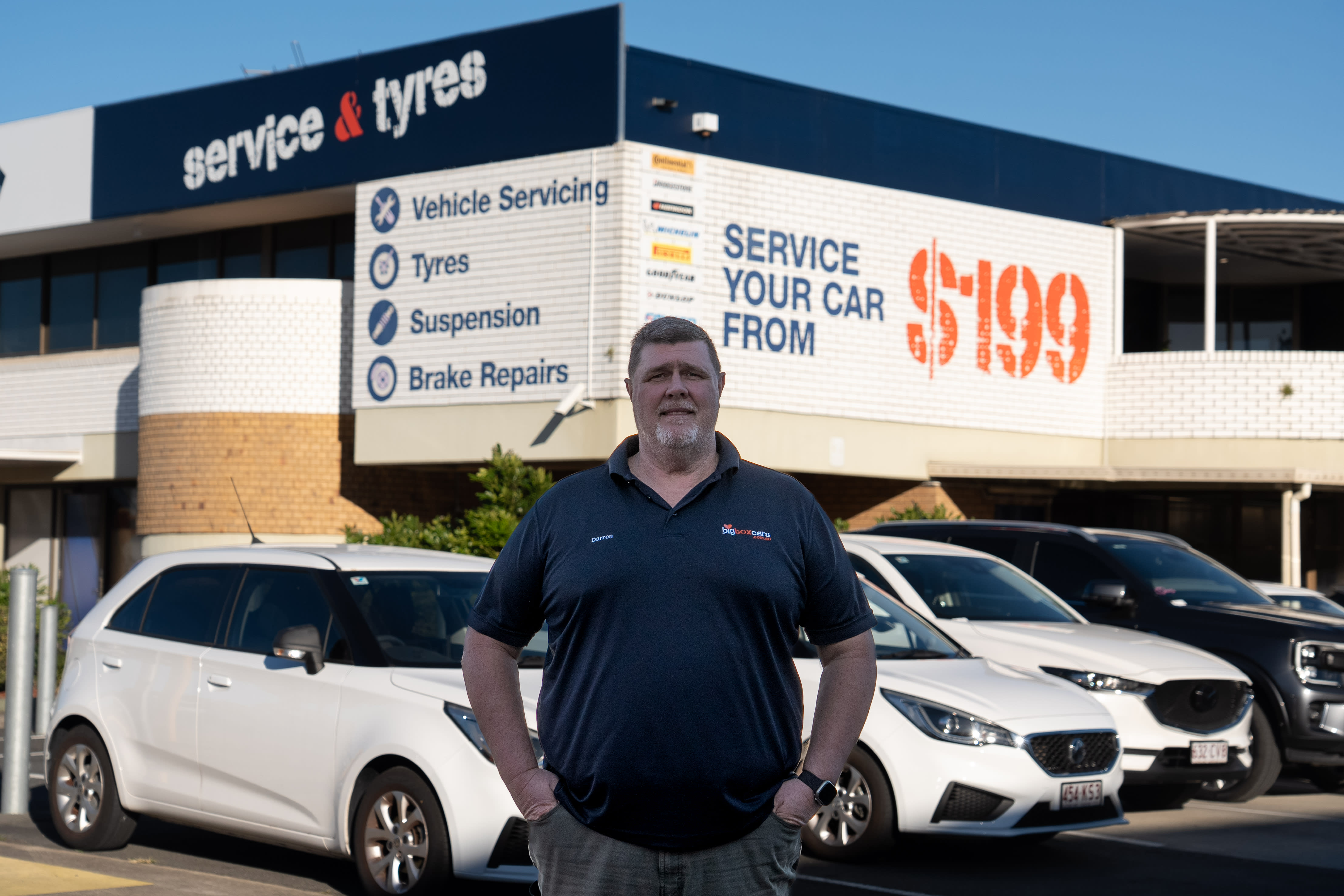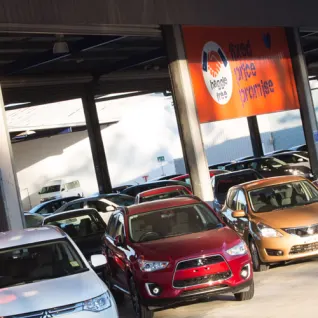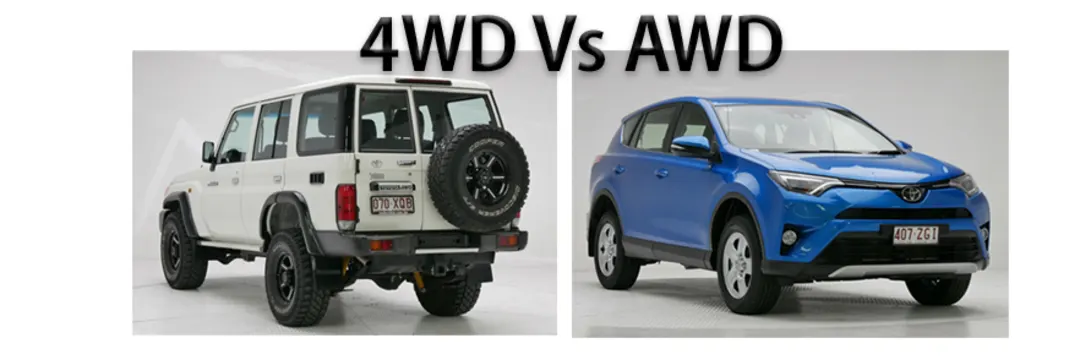
4WD Vs AWD - What's the Difference?
Posted in Bigbox Motoring Advice
Published Mon 20 Feb 2023
4WD Vs AWD - What's the Difference?
With All Wheel Drives (AWD) and Four Wheel Drive's (4WD) being so popular nowadays, it's never been so important to know the difference. You don't want to be 'that person' in their AWD blocking the track because you're out of your depths in a rut. You laugh now but there are many 4WD shoppers out there who are under the common misconception that an AWD is a 4WD. After reading this, however, you won't be one of them.

Full Time 4WD
4WD and AWD drivetrain's can be separated into three groups: Full Time 4WD, Part Time 4WD and All Wheel Drive. Each of these systems are different in terms of the how and when torque is delivered to each wheel.
Full Time 4WD is exactly what it sounds like. Torque is sent to all four wheels at all times. The driver has options available to them depending on how they need to tackle the road ahead. For example, the driver might need to use 'diff lock" (if available) to lock the center differential to restrict any rotational difference between the front and rear axles in order to gain maximum traction. Another option may be to engage 'low range' when driving up a steep incline or in extreme road conditions where torque is multiplied in the lowest gears.
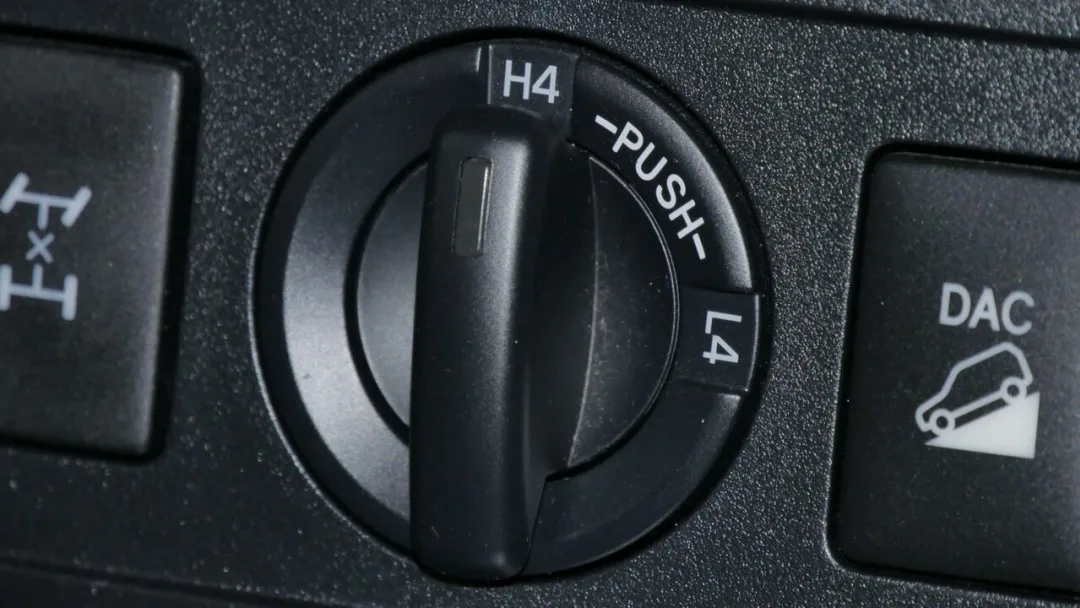
Part Time 4WD
Part Time 4WD is the Grandaddy 4WD system and the most basic.
This system still offers the driver the same options except in normal driving conditions it is driven in two wheel drive (2WD), usually powering only powering the two rear wheels. To engage 4WD the driver can selector a gear shift lever or electronic switching knob.
You find many part time 4WD's with differential between the front and rear axles. This means 4WD is restricted to purely off-road. Using 4WD on a bitumen road when the tyres have good traction can result in excess stress and damage to the drivetrain (often referred to as 'windup').
.webp)
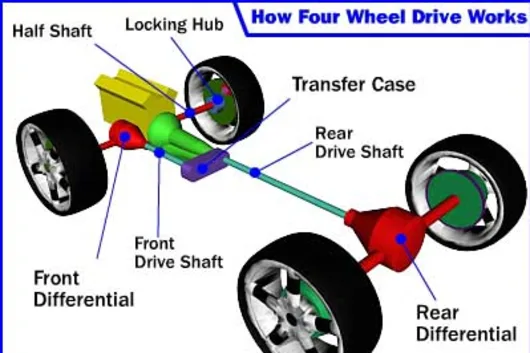
AWD
All Wheel Drive is similar to Full Time 4WD in the way that it also sends torque to all four wheels constantly. However, an AWD cannot lock the center differential between the front and rear axles meaning it doesn't have the same capacity of maximum traction that a 4WD does. Instead, the vehicle gets what's called Limited Slip Differential which limits slippage between the axles in low traction situations. AWD also lacks the 'low range' option that 4WD's have. You may find some vehicles appear to be a 4WD as they have a '4WD selector' button that sends more torque rearwards but don't be fooled. This is not a true center differential lock.
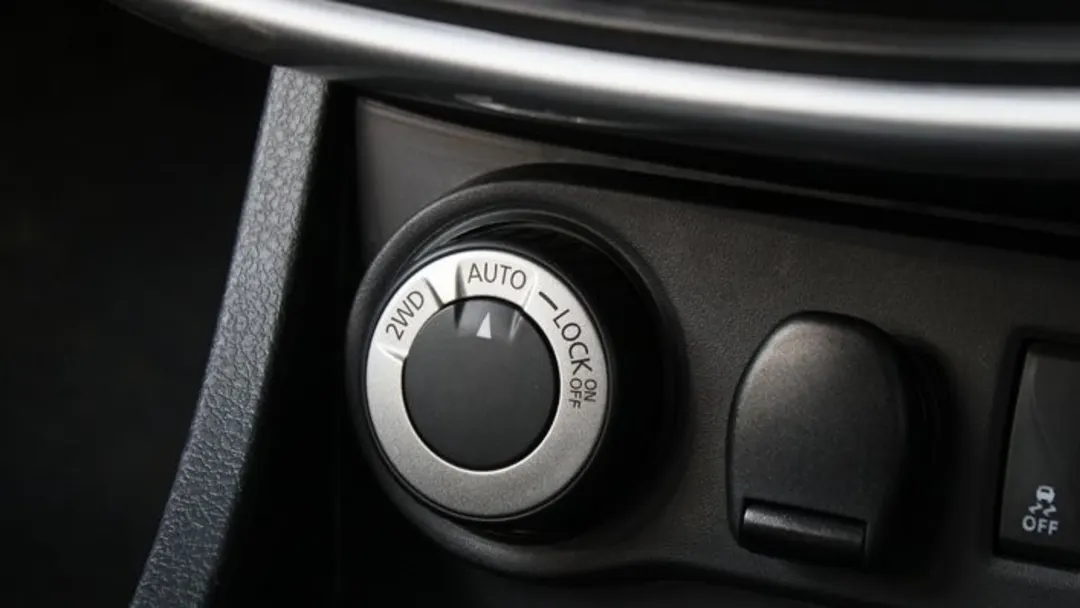
Conclusion
Essentially when it comes to four wheel driving, it is all about torque. In that arena, an AWD doesn't stand a chance against a 4WD, not to mention the ground clearance difference between the two. At the end of the day it comes down to figuring out what your needs are. If you know that you're wanting to tackle off-road tracks with truly tough terrain, then it might be time to consider upgrading to a part time or full time 4WD.However, if your idea of traveling 'off-road' is just slippery or loose unsealed roads, then an AWD is the better option for you.
Found something you like? To learn more about it's off-road capabilities, call one of our friendly team members today.

Choose.Buy.Enjoy
A better way to buy and sell used cars.
